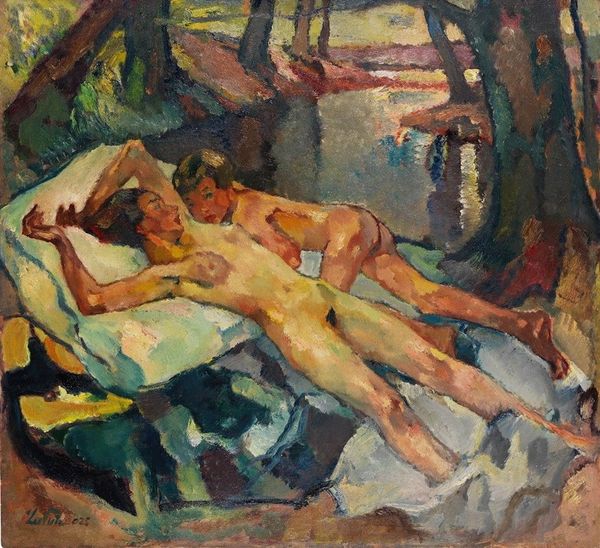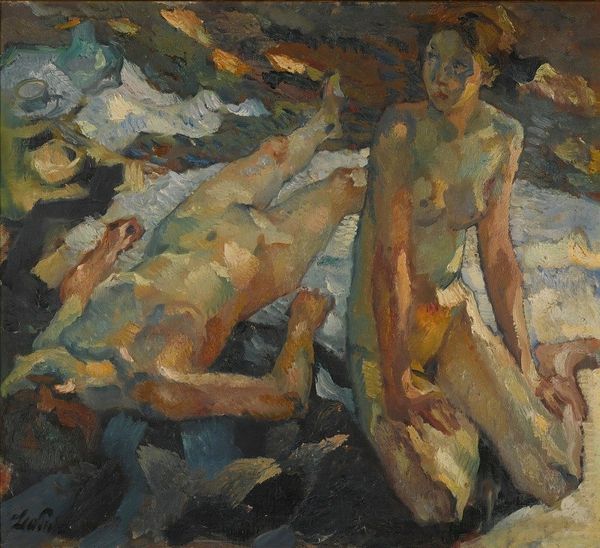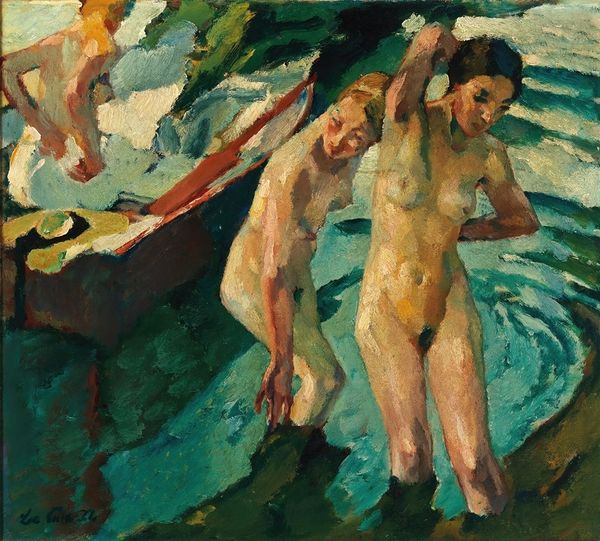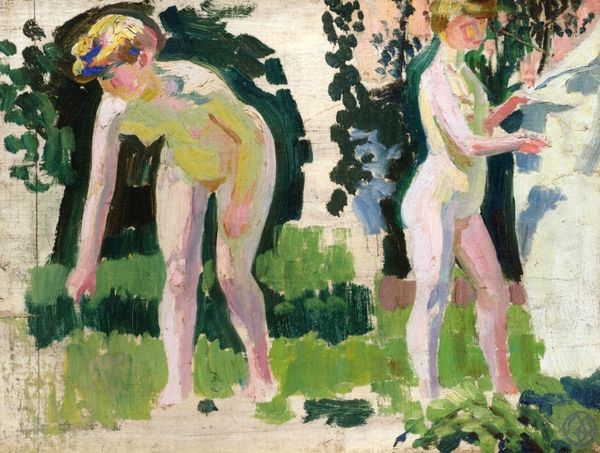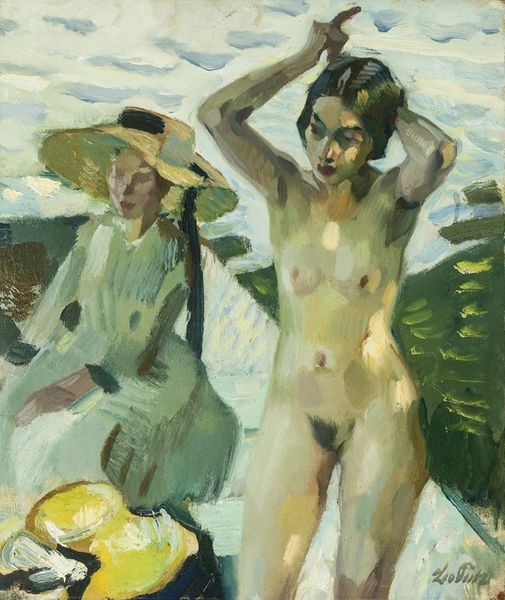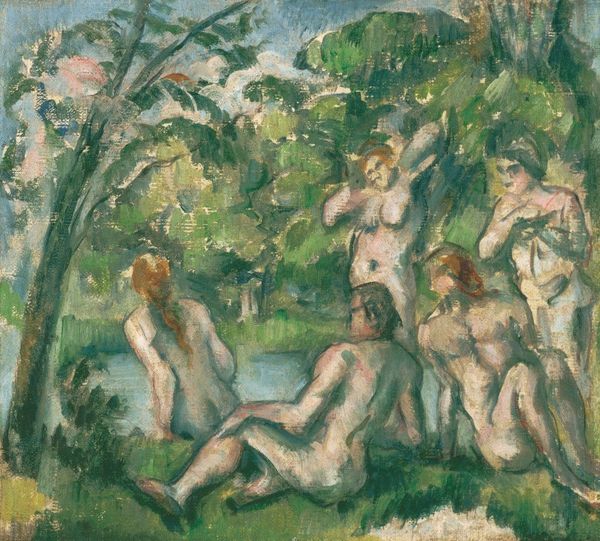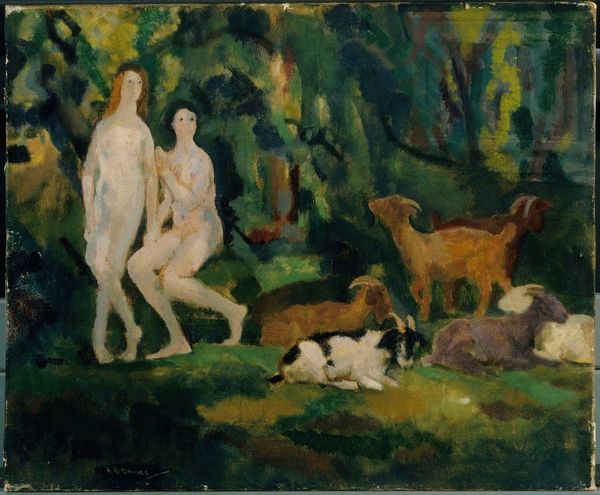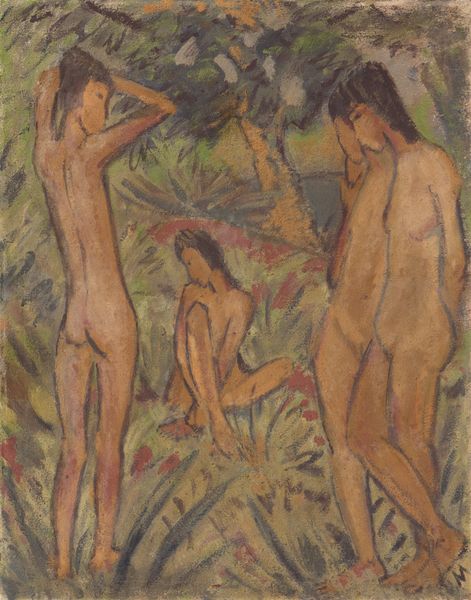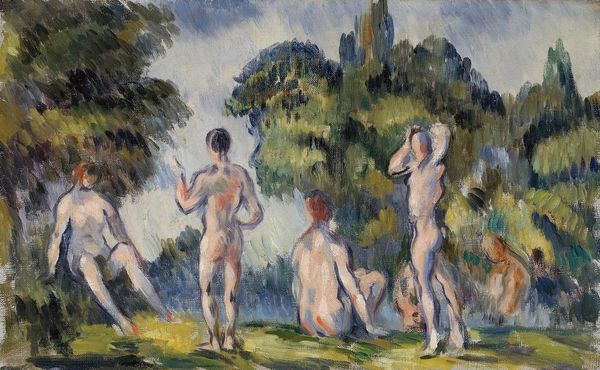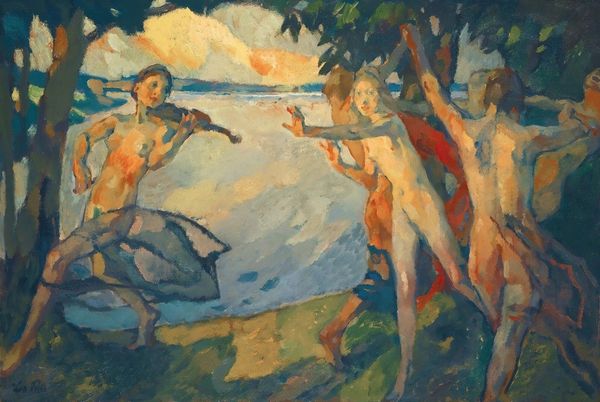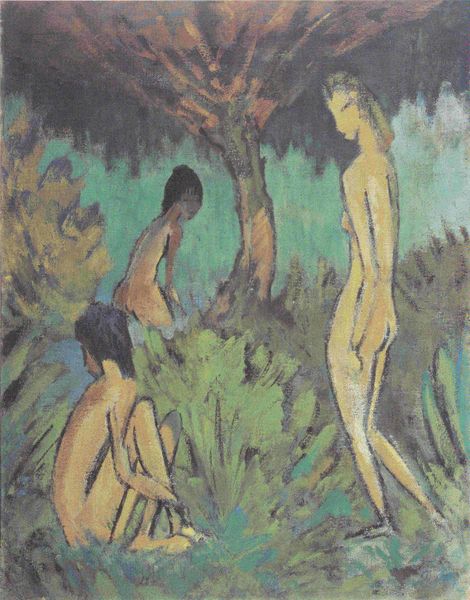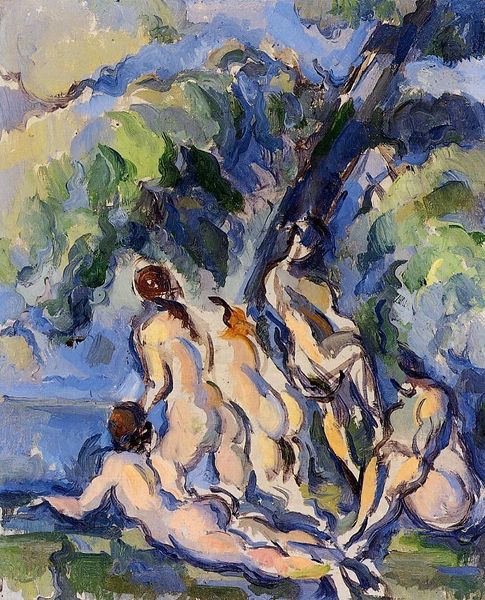
oil-paint
#
figurative
#
oil-paint
#
landscape
#
impressionist landscape
#
figuration
#
oil painting
#
expressionism
#
nude
#
expressionist
Copyright: Public Domain: Artvee
Curator: Welcome! Today, we'll be discussing Leo Putz's 1911 oil painting, "Die Badenden," which translates to "The Bathers." Editor: Immediately, I notice the dynamic brushwork. It gives a sense of flickering sunlight through trees, bathing these figures in fragmented light. It feels intimate, almost voyeuristic, wouldn’t you agree? Curator: The concept of the nude bather, especially within a landscape setting, is historically charged. From antiquity to Impressionism, it carries coded messages about nature, sensuality, and, let's be honest, the male gaze. But in Putz’s hands, does that reading still hold true? What if we explore the painting’s social context through the lens of early 20th-century anxieties about women's roles, nascent feminist movements, and burgeoning discussions about female autonomy? Editor: That's a strong re-framing. Certainly, Putz worked within the currents of his time. He's depicting a kind of Arcadian fantasy but through an early expressionist lens that feels decidedly modern. Curator: Exactly. The figures are somewhat idealized, yet the loose brushstrokes and their interaction with nature offer something more complex. They aren't simply passive objects; there is a sense of ease and community amongst them that invites queer readings around intimate friendships in homosocial communities. Is Putz reflecting and, perhaps, even anticipating shifting perspectives on female sexuality and social relations? Editor: Perhaps. The heavy use of green and brown pigments, mixed with the highlights of yellow on the figures create an earthy almost primeval feel. This is nature and woman unbound! Curator: It makes us consider the political role of imagery then, and how it shapes public perception. Did this challenge or reinforce prevailing social norms about women, art, and spectatorship at the time of its creation? Editor: Context is crucial. Understanding the dialogue this painting entered into during its initial reception helps reveal its significance. And to explore all the undercurrents and challenges that any female-centred subject will have. Curator: Indeed. It's not merely an aesthetic exercise; it’s a negotiation of complex societal ideas and transformations happening on multiple levels. Editor: An enlightening reflection. I leave feeling very curious to explore further this narrative through a feminine, female-first lense.
Comments
No comments
Be the first to comment and join the conversation on the ultimate creative platform.
